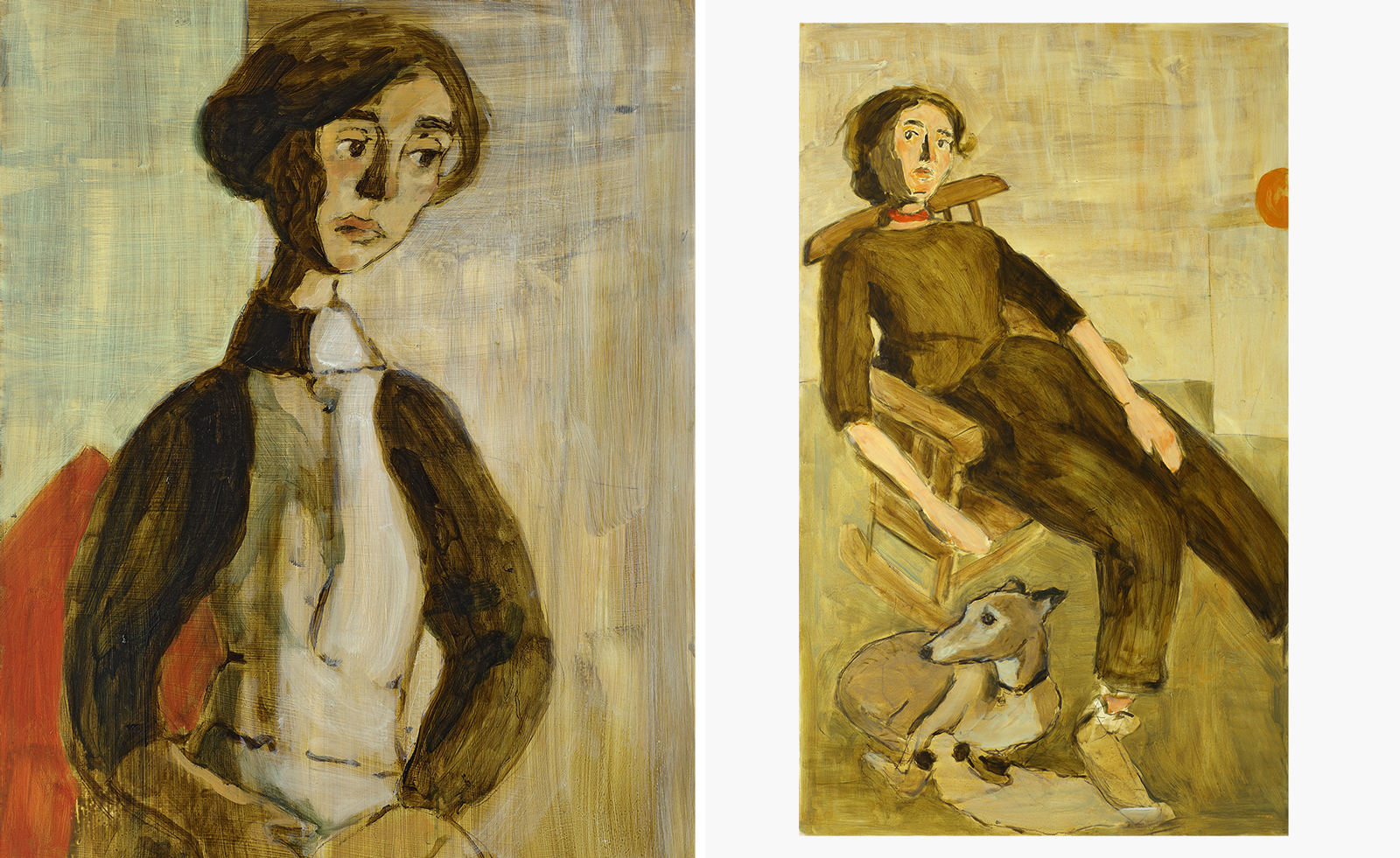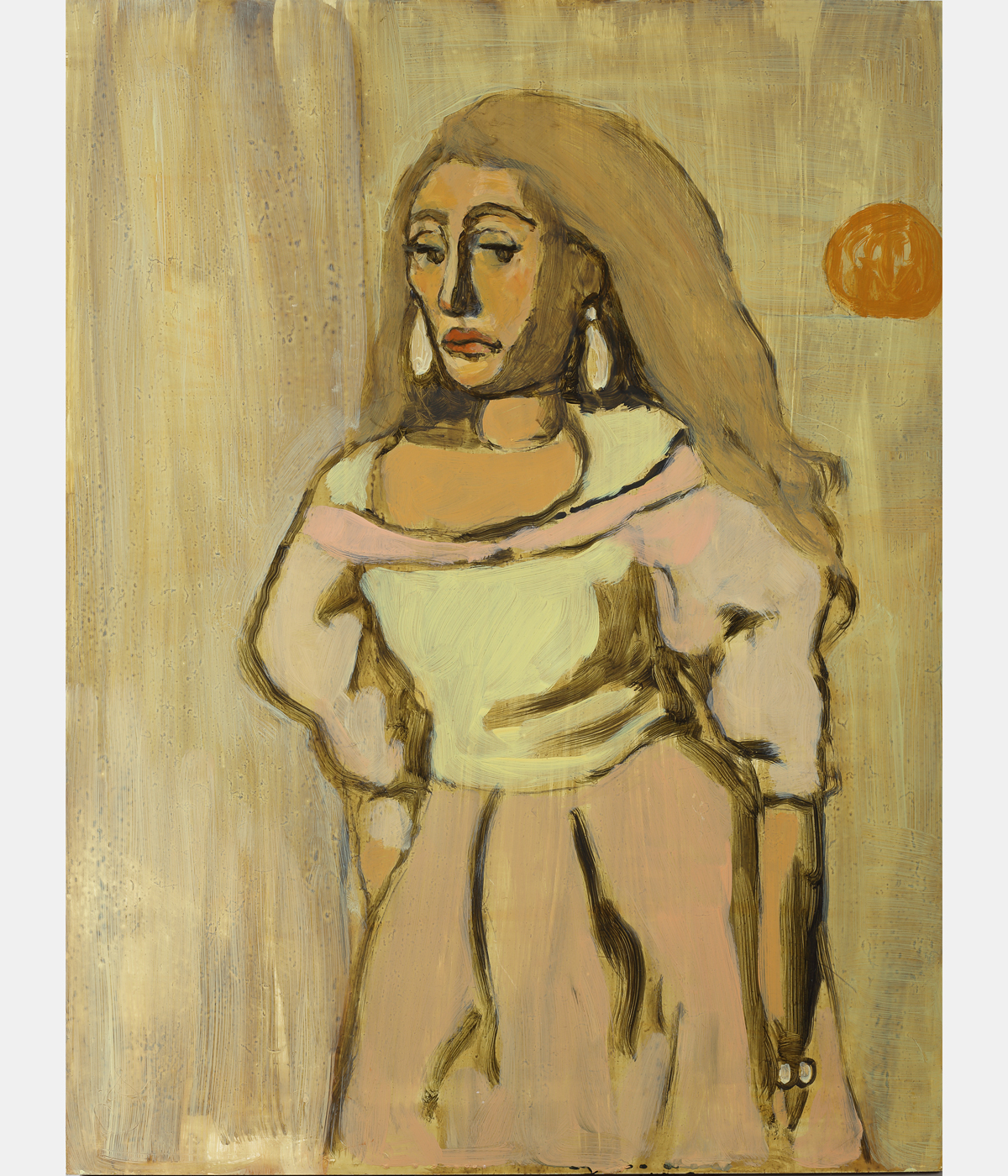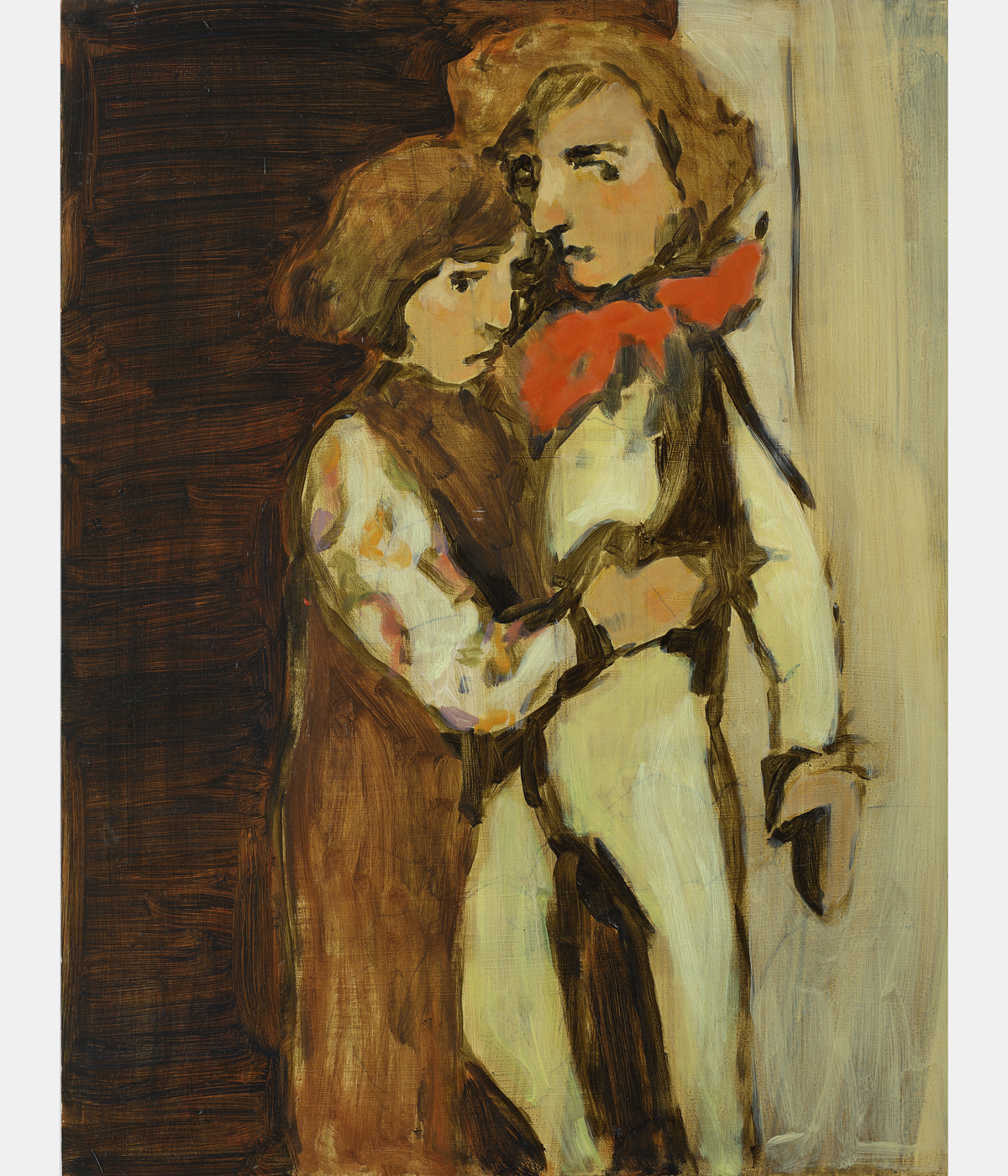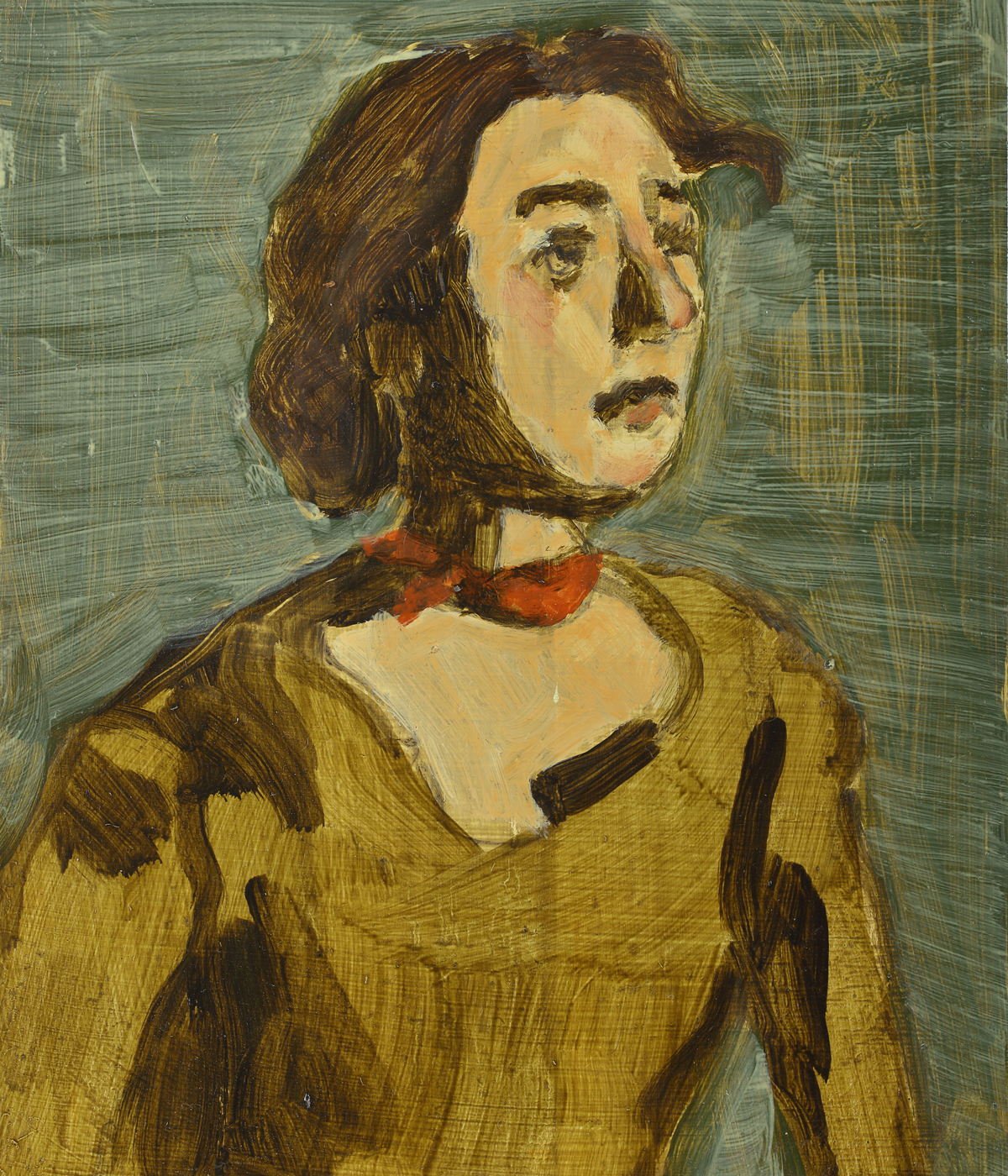Discover Liorah Tchiprout’s richly drawn depictions of an inner life
Liorah Tchiprout’s debut solo exhibition at the Marlborough Gallery, 'Two Eyes Wide Open at the Edge of Dawn', considers women’s interior lives

If the figures in Liorah Tchiprout’s paintings appear unsettlingly unreal - an awkward position here, an offbeat proportion there - it is because they are. The models in Tchiprout’s exquisite paintings are dolls she has created in her studio, adding a childlike innocence to the figures disconcertingly at odds with their expressions.
Tchiprout builds on this contradiction in the literary and cultural references her work is littered with, from symbolic nods in the pieces themselves, to painters such as Paula Modersohn-Becker, Käthe Kollwitz, R. B. Kitaj, Charlotte Salomon and Celia Paul; to the titles which allude to Yiddish women writers who explore the inner sanctum of womanhood.

Tchiprout, Title TBC, 2023, oil on board
‘I think that an artist’s practice never exists in a vacuum, and it’s a natural part of making work that the world outside of your studio ends up inside it, too,’ says Tchiprout. ‘Both what’s happening around you, but also what you use to escape from that, like the books, music, theatre, film and art you love. I think it’s an inevitability of making. But also there is an element of the possibility of embedding the things you love in your work, as a way of paying homage to them. For example, one of my favourite films is A portrait of a Lady on Fire; the red dress of the protagonist really attracted me and is a recurring theme in this work. In RB Kitajs Second Diasporist Manifesto, he writes "reading Jewish books is to me what reading trees is to a landscape painter" and I really connect with this. The titles for previous solo exhibitions, Frontier at the Country of Night and All Things are Kneeling were pulled from lines from the poetry of Yiddish women writers, and my (current) debut solo show at Marlborough Two Eyes Wide Open at the Edge of Dawn is a line from a Celia Dropkin poem, translated from Yiddish.’

Tchiprout, Remember who your dogs are, 2023, oil on board
The titles are a devastating foil for the blank, often indecipherable expressions of the sitters, who either gaze back at the viewer or look to the side, lost in contemplation. ‘A lot of the titles are less about the content of the paintings, but more of the interior life of the sitters, and the feelings of the works,’ Tchiprout adds. ‘The traditional format of etching, with the title written underneath the image in pencil, always feels like an invitation to "speak", and I collect lines from poems, conversations, songs which I pull titles from. I'm interested in what constitutes high or low brow, because I think when something moves us it moves us, and I like how varied the references can be. I also enjoy the fact that you can embed little secret references that the majority of people looking at the work might miss, but those that spot them feel like it's a message just for them.’
Ultimately, Tchiprout is keen to craft another world, one which nods to her childhood experience of observing her own world around her, as an attempt to process an often confusing and terrifying space. These paintings capture this sense of loneliness, and become a refuge in their own right.

Tchiprout, You can sing me anything, 2023, oil on board
‘The world within my work is a safe world, beyond any sort of violence,’ she says. ‘There is pain there though, and also longing and joy - always in flux. The narrative is never fixed, which I think has a comforting element. In Milan Kundera’s The Book of Laughter and Forgetting, he talks about the folk dance of dancing in a ring, and how it’s a closed rank - if you fall from the ring you keep on falling. He uses it as a metaphor for his expulsion from the Communist Party, but it really got me thinking about how it feels to belong, or not belong. My work currently exists in a sort of closed world, where the characters "dance in a ring", in dialogue with each other. In Le Grand Meaulnes by Alain-Fournier, two boys stumble across a mysterious chateau in the midst of a strange party, where one falls in love, and they spend the rest of the novel trying to find it again. I really connected with that. I do feel belonging but also a sense of otherness too, and I think this search for a time or place we have or will be loved and accepted is quite a universal one.’
Liorah Tchiprout’s exhibition at the Marlborough Gallery, 'Two Eyes Wide Open at the Edge of Dawn' is on until 28 January
Wallpaper* Newsletter
Receive our daily digest of inspiration, escapism and design stories from around the world direct to your inbox.
Hannah Silver is the Art, Culture, Watches & Jewellery Editor of Wallpaper*. Since joining in 2019, she has overseen offbeat design trends and in-depth profiles, and written extensively across the worlds of culture and luxury. She enjoys meeting artists and designers, viewing exhibitions and conducting interviews on her frequent travels.
-
 The Lighthouse draws on Bauhaus principles to create a new-era workspace campus
The Lighthouse draws on Bauhaus principles to create a new-era workspace campusThe Lighthouse, a Los Angeles office space by Warkentin Associates, brings together Bauhaus, brutalism and contemporary workspace design trends
By Ellie Stathaki
-
 Extreme Cashmere reimagines retail with its new Amsterdam store: ‘You want to take your shoes off and stay’
Extreme Cashmere reimagines retail with its new Amsterdam store: ‘You want to take your shoes off and stay’Wallpaper* takes a tour of Extreme Cashmere’s new Amsterdam store, a space which reflects the label’s famed hospitality and unconventional approach to knitwear
By Jack Moss
-
 Titanium watches are strong, light and enduring: here are some of the best
Titanium watches are strong, light and enduring: here are some of the bestBrands including Bremont, Christopher Ward and Grand Seiko are exploring the possibilities of titanium watches
By Chris Hall